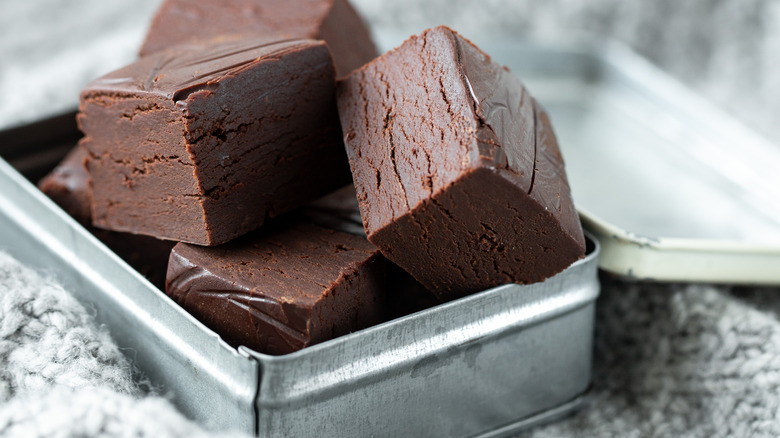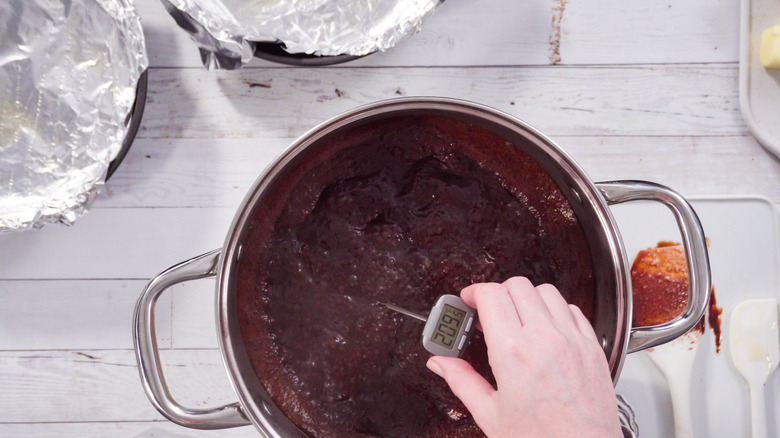This Is Why Your Homemade Fudge Turned Out Grainy
We may receive a commission on purchases made from links.
Fudge has been popular since the 1880s, promising a delicious treat with just a handful of ingredients including chocolate, milk, and sugar. While the recipe may look simple, you'll need to pay close attention if you want to avoid graininess and create a velvety, creamy texture in the final result. We asked Preston Stewart, Director of Chocolate at Onyx Coffee Lab and Project Manager for Terroir Chocolate, for his expert take on why some homemade fudge turns grainy and what you can do to ensure melt-in-your-mouth smoothness.
"Cooking sugar is inherently a tricky and challenging process to avoid crystallization which results in a grainy product," he says. "Table sugar (sucrose) is composed of two sugar molecules bonded together...glucose and fructose. When you cook sugar and it starts to melt, the bond between them is being broken, but they want to get back together." If they do, crystals form in the fudge, creating a gritty, granular texture. To prevent this, Stewart says to employ an "invert sugar" like corn syrup, which you'll find in many fudge and caramel recipes.
Perfecting your recipe
Want more tips to make the best fudge? One of the most important is to follow the temperature rule of making fudge. A candy thermometer is quite helpful for this process, as you can remove the fudge from heat once it reaches 235 degrees Fahrenheit. If you don't have one of these specialized thermometers, you can use the old-fashioned method of dropping a piece into cold water. If it forms a soft ball, it's done cooking.
Of course, there may be times when that level of precision is impractical, and you can lean on Stewart's suggestions for three common styles of fudge you should know, including some he says are "more foolproof to obtain a smooth texture." For example, there's a simpler recipe using marshmallow fluff, which does not crystallize when exposed to heat. He also mentions quick fudge made with chocolate chips, condensed milk, and vanilla melted in the microwave.
No matter what kind you make, Stewart says it's important to store it in a sealed container. "Sugar is hygroscopic, meaning it pulls moisture from its surroundings," he explains. "Ambient humidity can affect the texture of the finished product, making proper storage key." So eat up — or wrap it tightly until you're ready to serve.

